Fed’s Powell opens door to potential rate cuts at Jackson Hole
American Financial Group (NYSE:AFG) released its first quarter 2025 investor presentation on May 7, showing solid but mixed results across its specialty insurance segments. The company reported net earnings of $154 million and a specialty combined ratio of 94.0%, while its stock price declined 5.61% following the presentation.
Quarterly Performance Highlights
AFG reported core net operating earnings of $152 million for Q1 2025, translating to $1.81 per diluted share. Net earnings came in slightly higher at $154 million, or $1.84 per diluted share. The company achieved an annualized return on equity of 13.3% and an annualized core operating return on equity of 13.1%.
The financial highlights from the presentation show a consistent performance, though with some signs of pressure compared to previous periods:
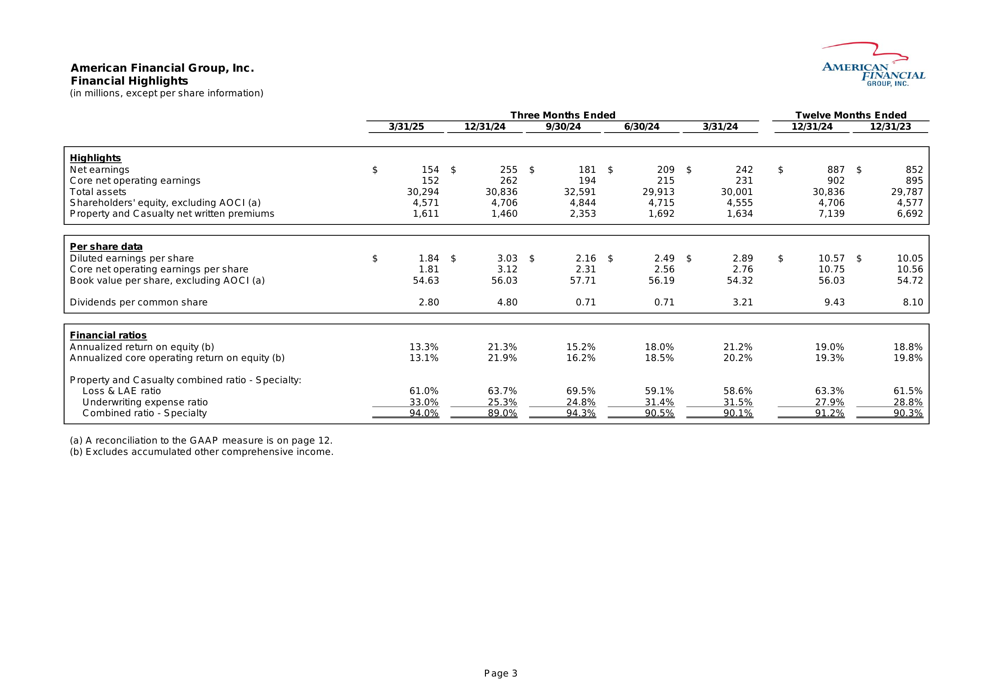
Property and Casualty Insurance operations generated $1.61 billion in net written premiums during the quarter, with the company maintaining a specialty combined ratio of 94.0%. This represents a slight deterioration from the 90.5% combined ratio reported in Q2 2024, suggesting some increased pressure on underwriting margins.
Segment Analysis
AFG’s business is divided into three main specialty insurance segments, each showing different performance levels during the quarter.
The Property and Transportation segment posted a combined ratio of 92.5% with an underwriting profit of $37 million on $563 million in net written premiums. This segment includes agricultural, commercial transportation, and property coverages.
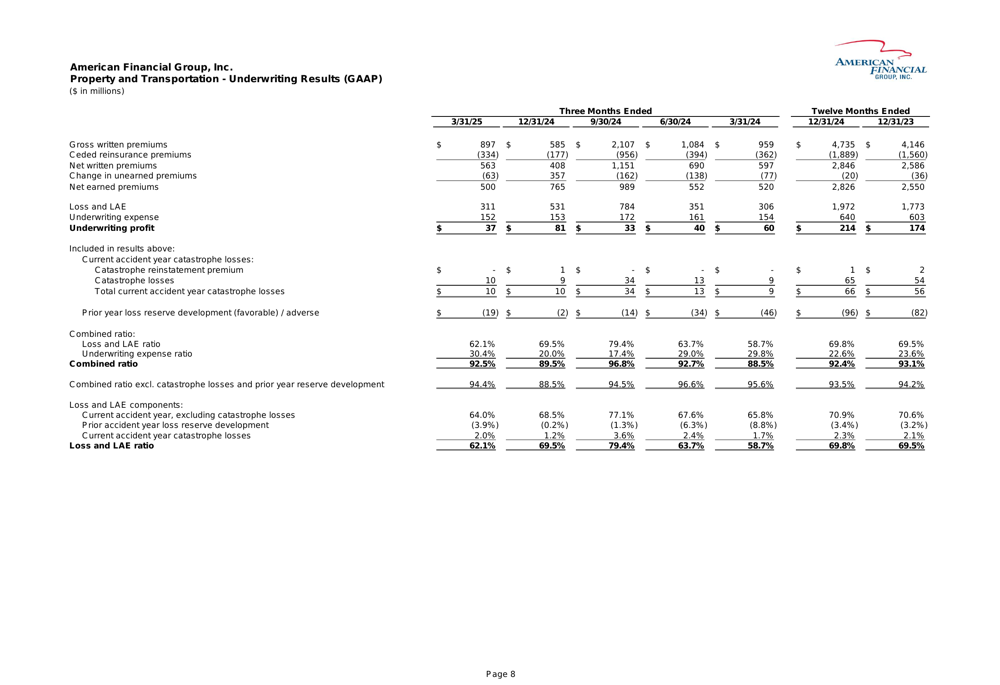
The Specialty Casualty segment, which includes workers’ compensation, excess and surplus lines, and executive liability coverages, showed the weakest performance with a 97.6% combined ratio. While still profitable with a $20 million underwriting profit, this segment faces the most significant challenges among AFG’s businesses.
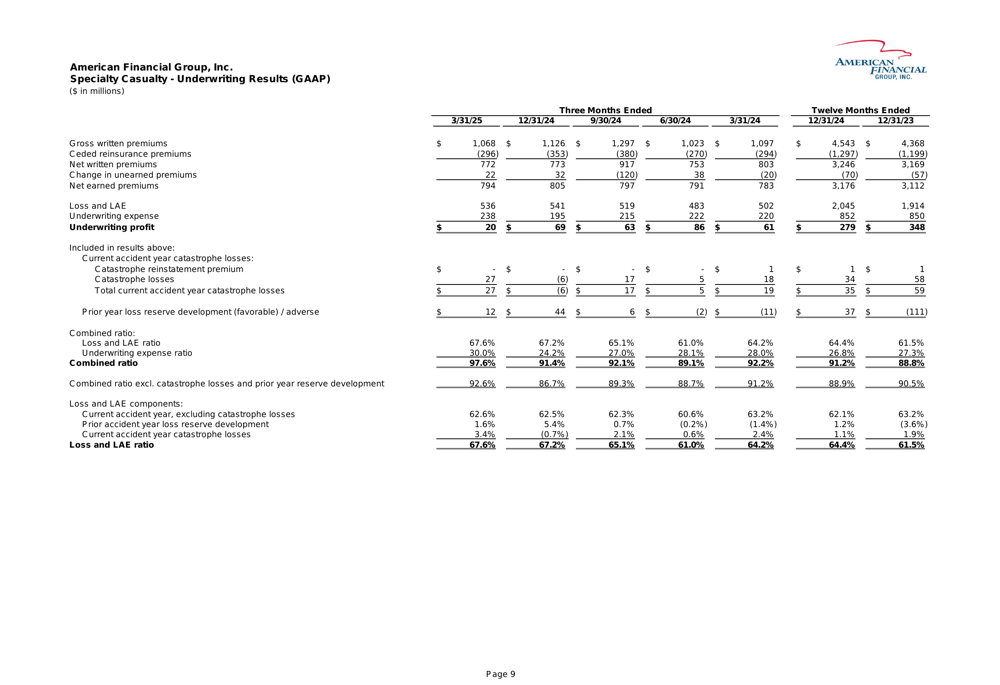
The standout performer was the Specialty Financial segment, which achieved an impressive 87.0% combined ratio and generated $37 million in underwriting profit on $276 million in net written premiums. This segment includes fidelity and surety bonds, lease and loan, and other specialized financial coverages.
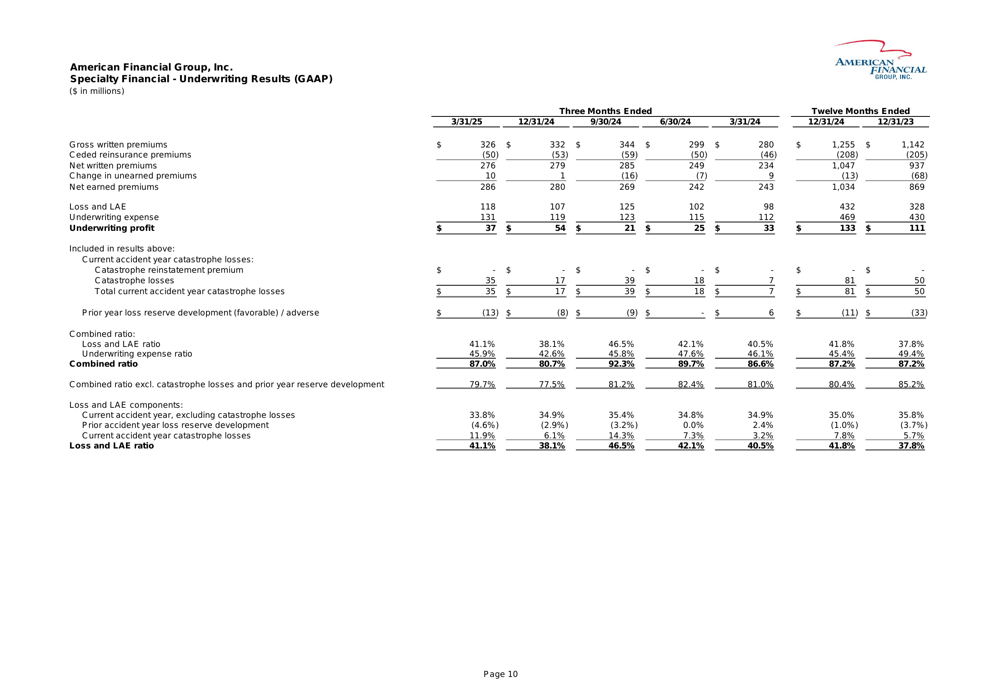
Overall, the company’s specialty insurance operations delivered a total underwriting profit of $94 million for the quarter, demonstrating AFG’s continued underwriting discipline despite varying segment performance.
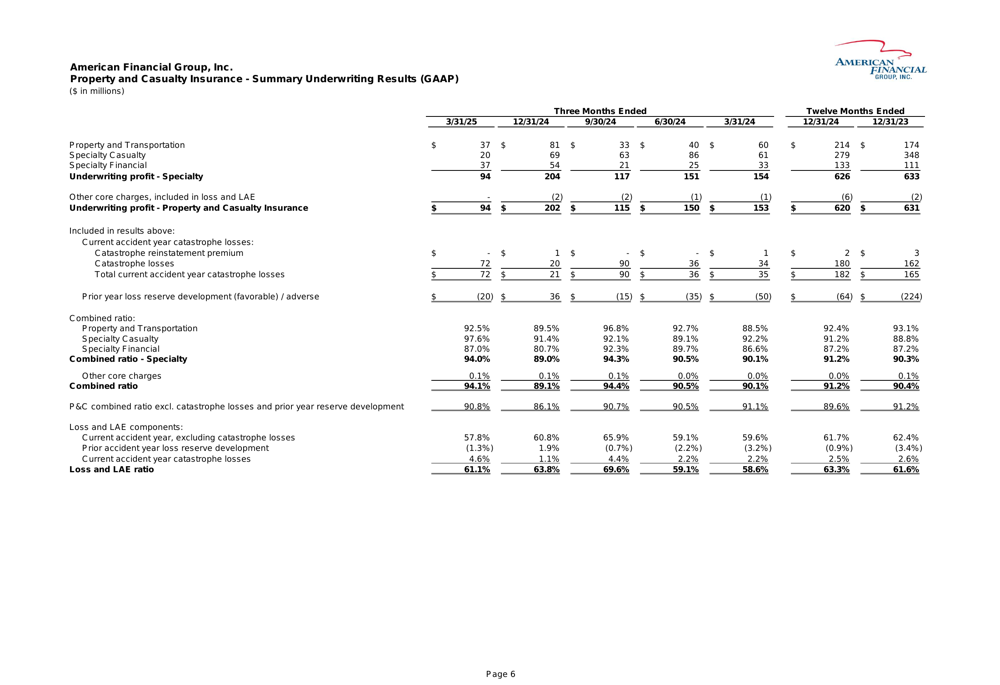
Financial Position
AFG maintained a strong financial position with total assets of $30.29 billion as of March 31, 2025. Shareholders’ equity, excluding accumulated other comprehensive income (AOCI), stood at $4.57 billion, with a book value per share of $54.63.
The company’s investment income reached $170 million for the quarter, contributing significantly to overall earnings. This investment performance helps offset some of the pressure on underwriting margins.
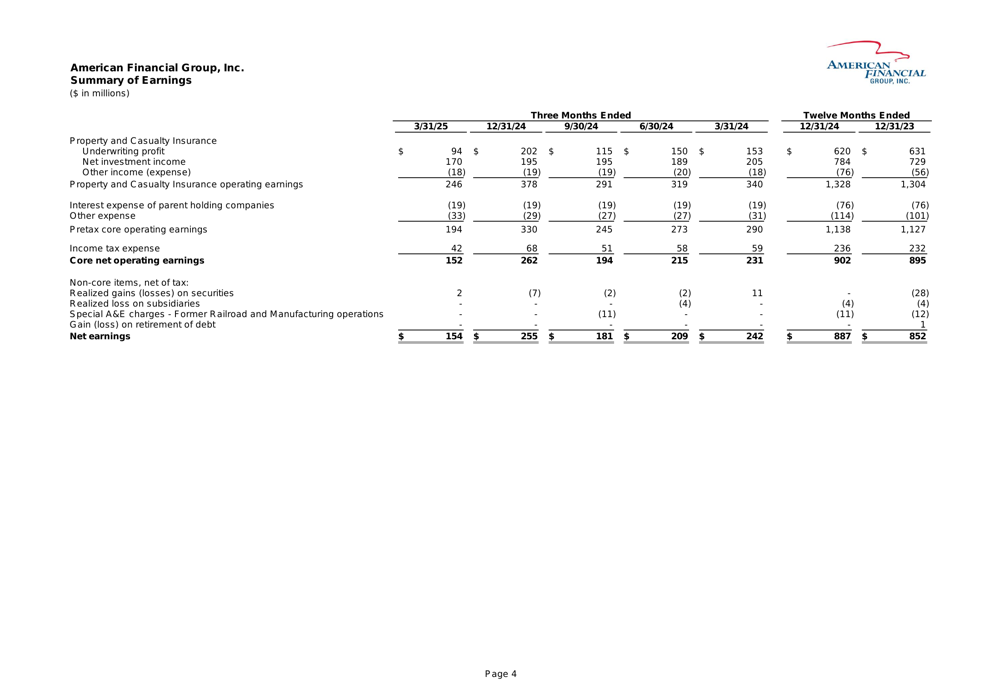
Market Reaction & Outlook
Despite the generally solid financial results, AFG’s stock price declined 5.61% on May 7, closing at $122.68, well below its 52-week high of $150.19. The negative market reaction may reflect concerns about the deterioration in the combined ratio compared to previous quarters and challenges in the Specialty Casualty segment.
This performance should be viewed in the context of AFG’s previous earnings report from Q2 2024, which featured a stronger 90.5% combined ratio and an 18.5% annualized core operating return on equity. The slight deterioration in these metrics suggests some headwinds in the current insurance market environment.
The company’s continued profitability across all segments and strong investment income indicate resilience, but investors appear concerned about the trajectory of underwriting performance, particularly given broader industry challenges including social inflation and increased claims severity in certain liability lines.
As AFG moves forward in 2025, market attention will likely focus on whether the company can improve its combined ratio back toward the levels seen in 2024 and maintain its strong returns on equity despite the challenging insurance market environment.
Full presentation:
This article was generated with the support of AI and reviewed by an editor. For more information see our T&C.
